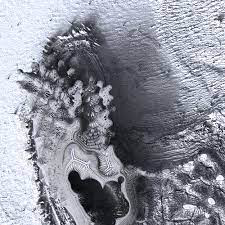
Polycephalum: On the origin of the Inhuman City, 2017. Image Courtesy of ecoLogicStudio
Increasingly, the quest to create automatic movement in response to stimuli is shifting to ever-smaller scales in the design of material behaviours, as we learn how to sense and control subatomic phenomena. In the words of Claudia Pasquero, ‘the build environment must be understood as a polycephalous phenomena. It’s plural, collective and mutant.’ In times of global climate change we are told no ecosystem is unaffected by human actions. Change, transformation and adaptation are all inherent qualities of the planet we inhabit. Then, why do we, human beings, seem so reluctant to abandon the immutability of the traditional construction processes and embrace these natural behaviours?
Central to this ontological dimension of architecture is the fear of change and, ultimately, the fear of decay. ‘Who knoweth if to die be but to live, and that called life by mortals be but death?’, asks Euripides. Historically, we have associated construction with machines and devices that were clearly identified as objects under our control. Against the established idea that buildings can look forever new, these new material ecologies embrace an aesthetic of impurity often derived from self-regulated growth that age over time. Destruction, decay and dissolutions are some of their most fundamental processes and a critical part of their circularity; the one that we have all tried to erase from our consciousness (Claudia Pasquero).
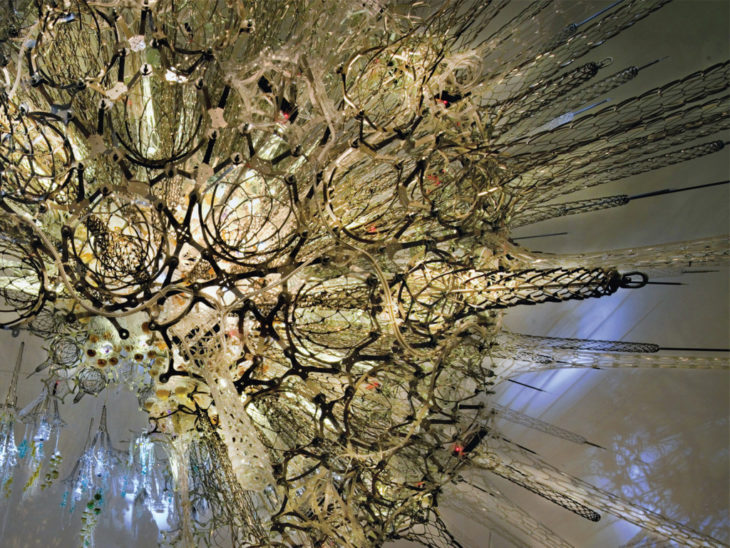
Living Architecture Systems, 2019. Image Courtesy of Living Architecture Systems
In Phaedo, Plato argues that the study of philosophy is the study of death, or ‘melete thanatou’; a kind of catharsis of the human being. Martin Heidegger, on the contrary, argues for a different outlook on death. He sets out to understand what it really means to be, and in his Being and Time, he argues that time leads to Dasein’s death, and therefore time is slowly killing Dasein. This is simply because Being is time, and time is finite. He suggests that Dasein needs to confront the reality of its own mortality by acknowledging its Being-towards-death, because only when one acknowledges and accepts death, will one break through the fallenness and lives an authentic and free existence.

In the same way, architecture should overcome the traditional understanding of immaculate fabrication/deposition of immutable objects. New tools of—agent-based—simulation and the efficiency of Convolutional Neural Networks (CNN) linked to a new intelligence of materials has opened the way to extended algorithmic profiles of materials and to new reactive numerical models (Andre Witt) that have fundamentally put into question our relationship to other living ecosystems. The famous Vitruvian human figure that guided the design of our historic western world was framed by walls. But, instead of resistance and closure, new open-form languages for architecture can foster mutual relationships and new paradigms that open boundaries offer renewal (Philip Beesley).
Therefore, this stage of technological evolution is opening up scenarios where traditional dichotomies such as natural and artificial, material and digital, human and non-human become obsolete. Computational processes promote new visual languages that reveal emerging territorial and urban narratives athat are profoundly ‘natural’. If, for example, we look at large, growing cities from a satellite, we realise that it is becoming increasingly difficult to define what is natural and what is artificial. Cities appear as complex synthetic organisms since most global systems today, both natural and artificial, are non-linear and composed of billions of interlocking feedback loops (Claudia Pasquero).
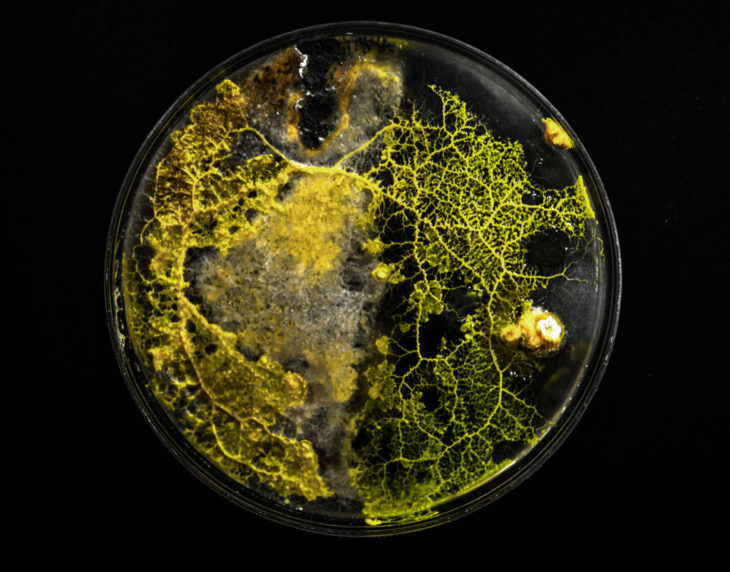
Anthropocene Island. Air, clusters of inhabitable bioreactor cells (1x1km @0.5m/res), 2017. Image Courtesy of ecoLogicStudio
This shift towards an ecosystemic city must be, therefore, simultaneous to new aesthetical definitions of the shape in relief (Konrad Fiedler) and to a new understanding of space (August Schmarsow, Raumgestaltung) (Frédéric Migayrou). Biotechnology and AI designs are enabling a new vision of urbanity in which evolving fungi, bacteria, spiders, swarm machines and other forms of intelligences become, alongside humans, bio-citizens, contributing to a new urban morphogenesis. Such unity might promote a truly ecological design paradigm, facilitating formal expression constrained by, and supportive of its hosting environment. Once achieved, architectural design will have arrived at a new ecology of and for the artificial: a Material Ecology (Nery Oxman).
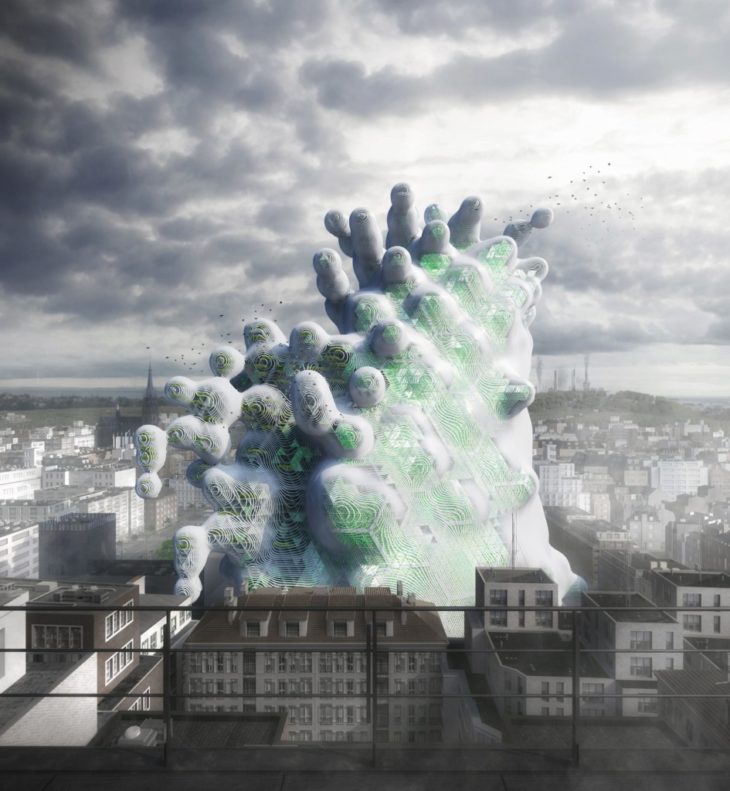
Polycephalum: On the origin of the Inhuman City, 2017. Image Courtesy of ecoLogicStudio
The Triumph of the Ecology; Case Studies
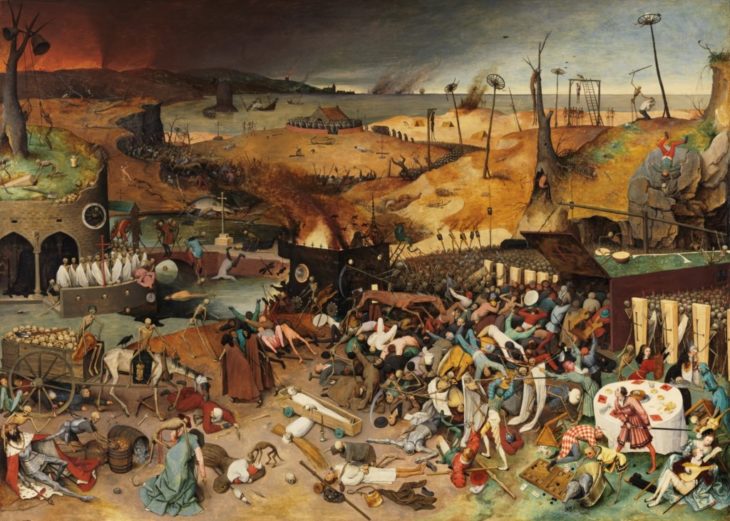
Pieter Bruegel the Elder, The Triumph of the Death, ca. 1562
Beehives Studies by Nery Oxamn
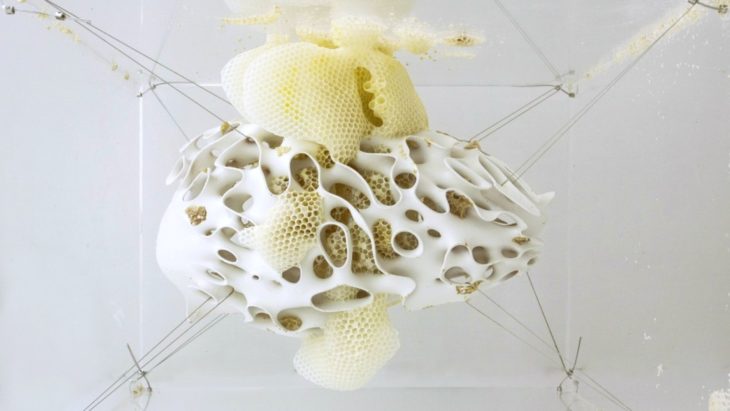
Source: The Neri Oxman material ecology catalog
These projects apply Mediated Matter’s ongoing research into biologically augmented digital fabrication with silkworms and eusocial insect communities to product, architectural, and possibly urban, scales. Many insect communities present collective behavior known as “swarming,” prioritizing group over individual survival, while constantly working to achieve common goals.
SilkWorm Pavilion by MIT Media Lab Mediated Matter Group
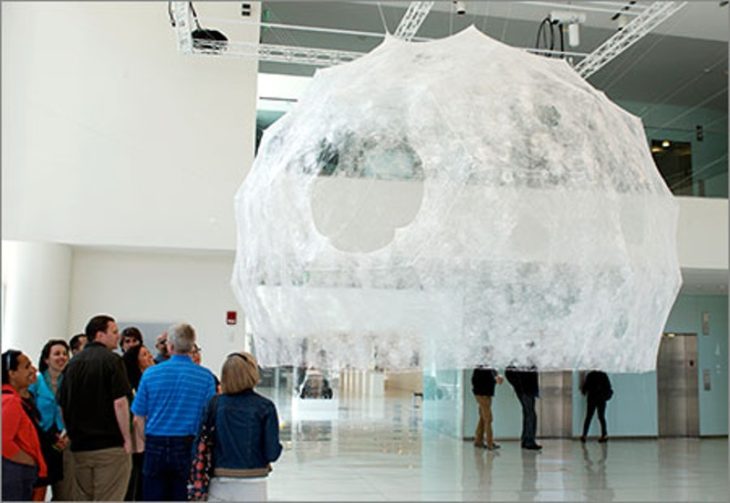
The Silk Pavilion explores the relationship between digital and biological fiber-based fabrication on an architectural scale. Its primary structure is comprised of 26 silk-threaded polygonal panels laid down by a CNC (Computerised Numerical Control) machine. Inspired by the silkworm’s ability to generate a 3D cocoon out of a single multi-property silk filament, the Pavilion’s overall geometry was created using an algorithm that assigns a single continuous thread across patches, providing functional density gradients informed by environmental constraints such as light and heat. Overall density variation was informed by deploying the Bombyx mori silkworm as a biological multi-axis multi-material 3D ‘printer’ in the creation of a secondary fiber structure.
H.O.R.T.U.S XL by ecoLogic Studio, 2017
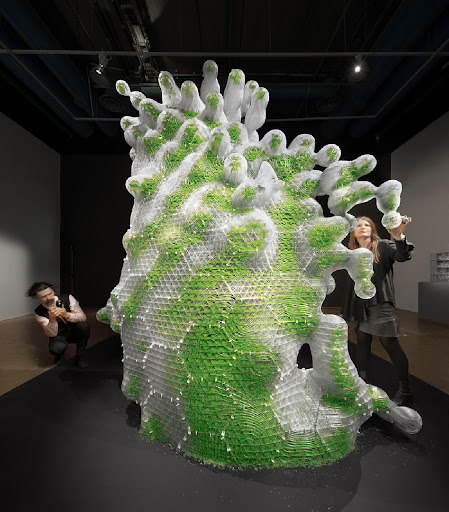
Source: H.O.R.T.U.S. XL Astaxanthin.g by ecoLogicStudio – ©NAARO.
H.O.R.T.U.S. XL Astaxanthin.g is a large scale, high-resolution 3D printed bio-sculpture receptive to both human and non-human life. This project confronts the dictates of human rationality with the effects of proximity to bio-artificial intelligence. It is developed in “collaboration” with living organisms. Their non-human agency is mediated by spatial substructures ecoLogic Studio developed while studying biological models of endosymbiosis.
Air Bubble by ecoLogic Studio, 2020
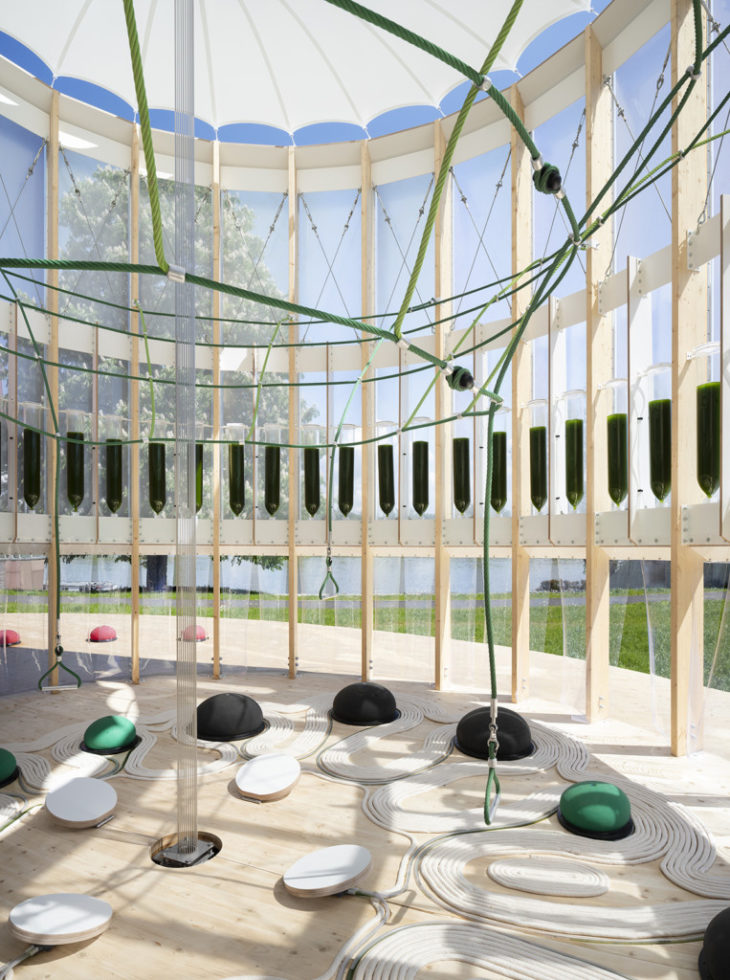
The AirBubble hosts 52 large bioreactors in borosilicate glass which contain 520 litres of living green Chlorella sp algae cultures that can filter a flow of polluted air of 200 litres/minute. While the liquid medium washes particles, the algae actively eat the polluting molecules as well as carbon dioxide to then release fresh clean oxygen.
Bibliography:
Architecture and Technology: Future of Cities, Norman Foster Foundation, 2020
Phaedo, Plato, circa. c. 427– c. 347 B.C
Sein und Zeit, Martin Heidegger, 1927
‘Polycephalum: Aesthetic as a Measure of Ecological Intelligence’, Claudia Pasquero, 2019
‘Living Architecture Systems’, Philip Beesley, 2019
‘Naturalising Architecture. Naturaliser l’Architecture’, Archilab, Frédéric Migayrou, u.d.
MATERIAL ECOLOGIES – AN ODE TO DECAY is a project of IAAC, Institute for Advanced Architecture of Catalonia developed in the Master In Advanced Computation For Architecture & Design 2021/2022 by students: Charbel Baliss, Pablo Jaramillo and Irene Martín, and Faculty: Jane Burry